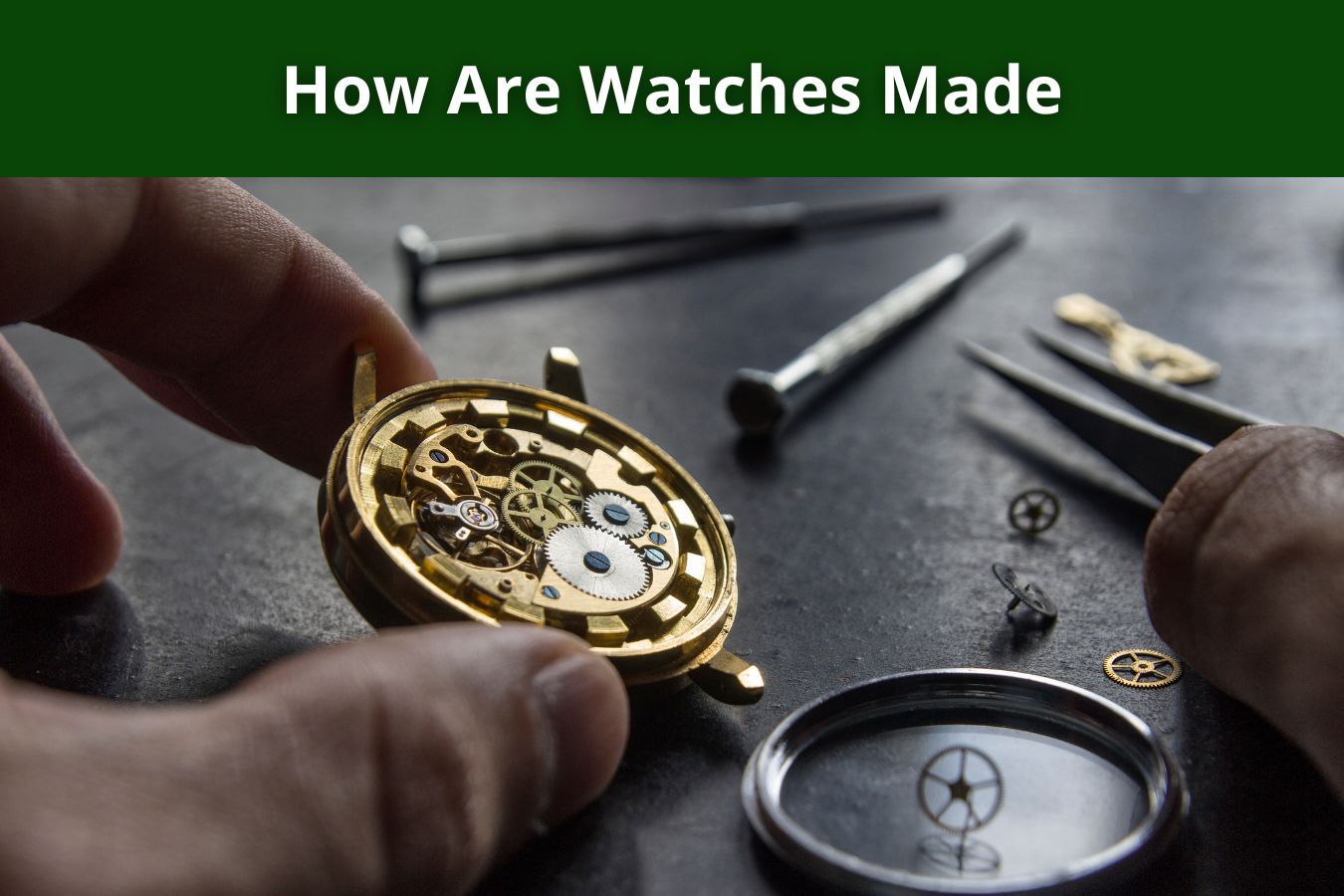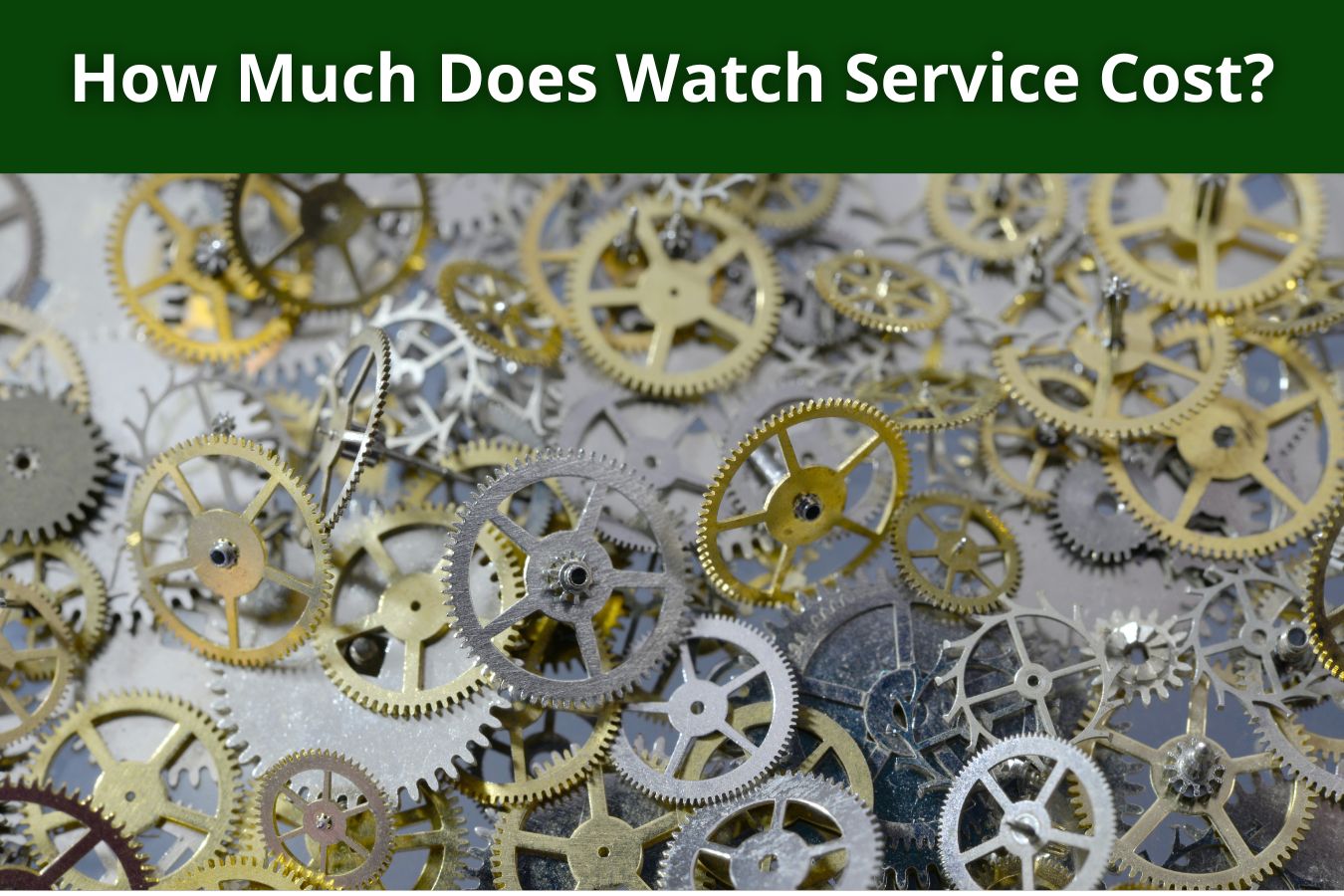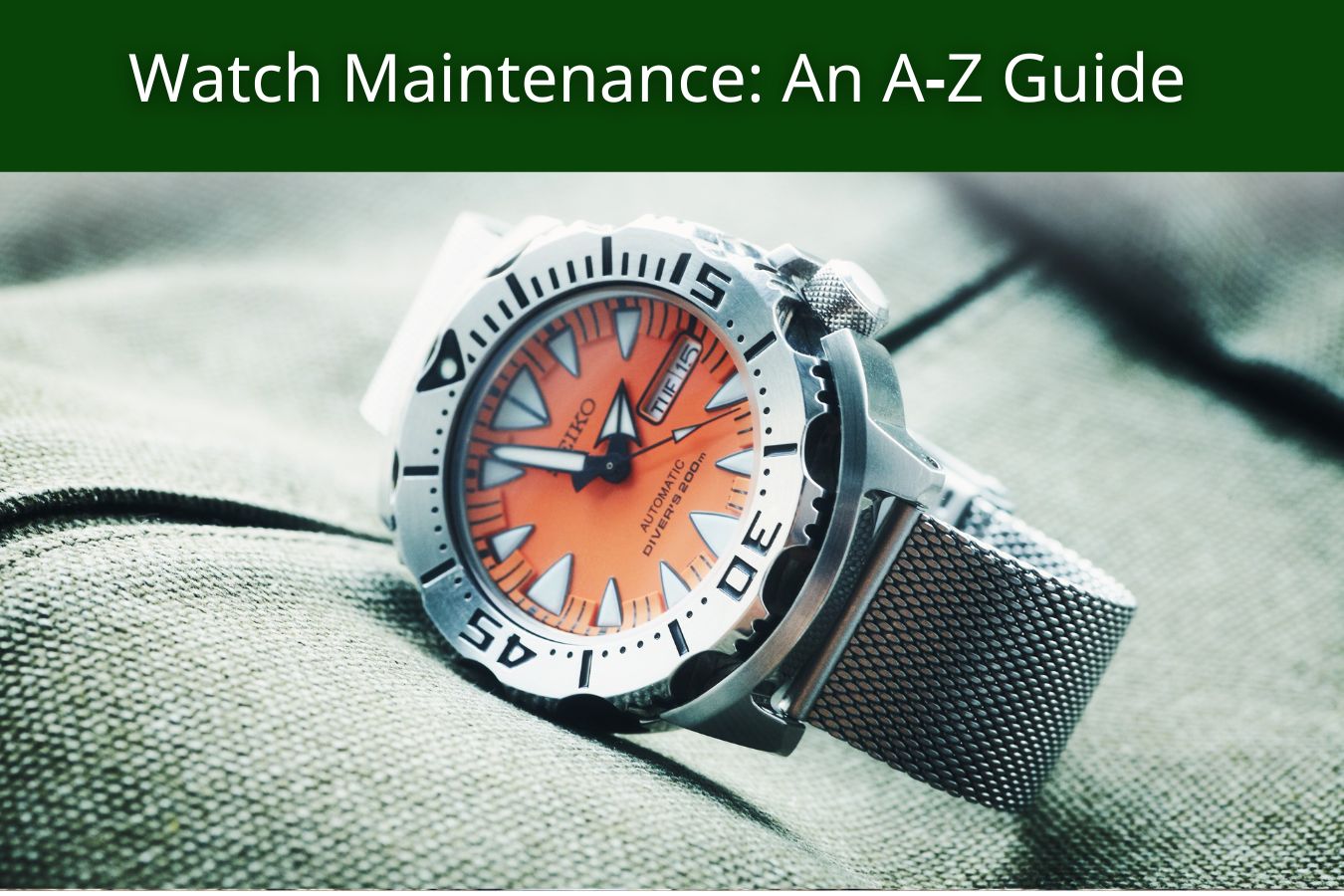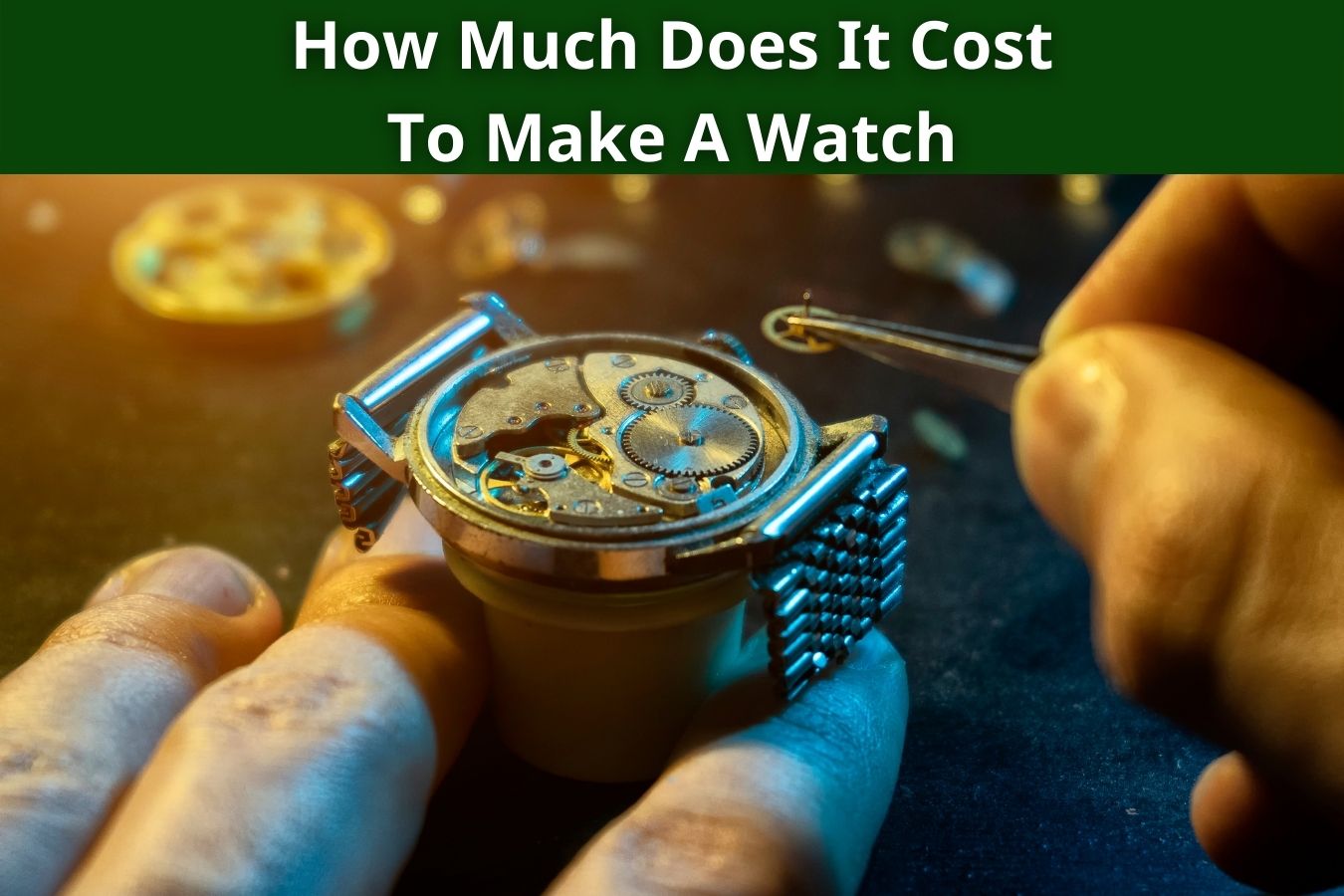How are watches made? There are different kinds of watches and all work with different mechanisms making it impossible to answer this question with a single answer. Keep scrolling for a detailed description of how these watches are made.
Evolution Of Watches And Their Mechanisms
To understand how watches are made, we need to take a brief look at the history of watches.
Watches were invented way back in the 17th century. They had similar working mechanisms as clocks which were developed in the 14th century.
These types of watches were powered by a spiral spring of metallic ribbon known as the mainspring. The mainspring is connected through a rachet to a crown which when winded, contracts the mainspring. The energy from the contraction is stored in the mainspring and is released gradually to help turn the clockwork gears of the watch.
The process is complete in a day or two after which the spring relaxes and the watch stops. To ensure the continuous working of the watch, the mainspring needs to be mechanically winded often by its owner. These types of watches are known as Mechanical watches because they require mechanical efforts to keep them running.
A variant of the mechanical watch is the Automatic watch or Self-winding watch. Their mechanism of work is the same as the mechanical watches but instead of their mainspring being winded mechanically by hand, they are winded by a rotor (a semicircular metallic plate that rotates freely with the movement of a wearer’s wrist). The rotation of the rotor winds the mainspring. The passive movement of the wearer’s wrist ensures that an automatic watch keeps running as long as the user wears it often.
Most modern watches work on principles different from mechanical or automatic watches. With advancing technology arise the inventions of the Quartz Watch in the 1960s.
Quartz watches are powered by batteries that can last for years. The major instrument in a quartz watch is the quartz crystal, a mineral of silica with piezoelectric characteristics. Materials with piezoelectric characteristics are materials that give measurable electrical responses when stimulated by electrical current or pressure. Quartz crystals oscillate at exactly 32,768 times per second when an electrical stimulus is applied. The oscillations are measured, converted into seconds, and displayed digitally as LCD or LED or as analog by transmitting the information to a gear system.
How Different Watches Are Made
Different types of watches have their unique components crafted together uniquely to make them work. Let’s look at them.
Mechanical Watches
Mechanical watches contain a lot of moving parts which are collectively known as movements. The movements are delicate and require high skill of craftsmanship to assemble perfectly to minimize the inaccuracies of the watch to a few seconds per day. The movements are contained between the front plate which is below the hands of the clock and the back plate which comes in contact with the wrist. The overall shape of a watch is determined by the style of arrangement of its movements.
Movements of a Mechanical watch
- Mainspring – Mechanical watches don’t use batteries. The mainspring is its source of power. It is made from a coiled metallic spring connected to the crown. By winding the crown, the mainspring becomes tensed and the energy is transferred to the next movements.
- Wheel train – The mainspring is connected to the wheel train. A group of gears complexly connected to generate the motions of the time-keeping hands of the watch.
- Escapement and balance wheel – The wheel train is connected to the escapement which is in turn connected to the balance wheel that operates like a grip-and-release circuit. It also controls the rate of transmission of the energy stored in the mainspring to the wheel train.
- Jewel bearings – These bearings are placed at the axle of each wheel to reduce friction. It also acts as a shock absorber allowing the watch last for decades without stopping.
- Motion works – These consist of gears that connect the crown and the wheel train. The connection makes it possible to set the time on the watch.
Automatic Watch
Automatic watches are made similarly to mechanical watches. It only contains an extra movement called a Rotor.
A Rotor is a semicircular metallic piece that rotates with the movements of an Automatic Watch. Its motion automatically winds up the mainspring eliminating the stress of having to do it via the crown of the watch.
Quartz Watch
Quartz watches are the most accurate types of conventional watches. They require the least maintenance and are very affordable. Their invention eliminated the need for other types of watches making them the most popular watch today.
Quartz Watch is made from:
- Quartz crystal – Quartz is processed into quartz crystals then it is cut into the desired size and thickness in accordance with the needs of the watchmaker.
- Microchip – Power from a battery is directed into the quartz crystal. The oscillations of the crystal are picked up by the microchip as an electric impulse. The frequency of oscillations the chip receives is stepped down to align with the unit of time measurement (second, minute and hour).
- Display – Quartz watches are most accurate when displayed digitally through Light Emitting Diode (LED) or Liquid Crystal Display (LCD) because the process does not require a mechanically moving part that can be affected by friction or dirt. However, the oscillations can be transmitted to gears and displayed as analog.
FAQs
A mechanical watch needs to be winded by hand while an automatic watch can passively wind itself.
A good mechanical watch should be off by 1 or 2 seconds per day
Buy watches that fit your preference or budget since. At the end of the day, all watches tell the same time.
As we have seen
There are different types of watches and all are produced differently. Mechanical and automatic watches require skill and expertise to produce but are less accurate than quartz watches which are mass-produced and are less expensive. Quartz watches are the most popular type of watch, they come in different styles and prices. You should choose the best for you and stick with it.







